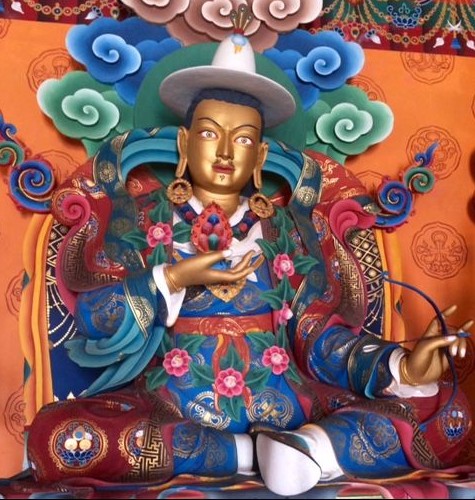Chokhor Duchen - The First Turning of the Wheel of Dharma
There are four major Tibetan Buddhist holidays — Duchen or ‘Great Occasions’— marking the four events known as the ‘great deeds’ of the Buddha.
The first is Chotrul Duchen, which falls on the first full moon of the year and celebrates the time when the Buddha is said to have displayed a different miracle each day to spur on his disciples.
The second is Saga Dawa, which remembers the Buddha’s enlightenment, death and parinirvana.
The third is Chokhor Duchen, which commemorates the Buddha’s first sermon and the teaching of the Four Noble Truths.
Chokhor Duchen
One of the four great holy days of the Tibetan calendar is today July 16, 2018. It is known as the Festival of Turning the Wheel of Dharma, Chokhor Duchen commemorates the anniversary upon which Shakyamuni Buddha first began teaching the Dharma.
On today the effects of positive or negative actions are to be multiplied by 10,000,000 ten million times.
For seven weeks after his enlightenment, the Buddha did not teach. Legend has it, both heavenly beings, the Indra and Brahma offered a dharmachakra and a conch shell and requested Shakyamuni Buddha to turn the precious Dharma.
Accepting, Buddha Shakyamuni turned the Golden Wheel of Dharma for the first time at Sarnath by teaching on the Four Noble Truths.
In Tibet it is a day of pilgrimage when believers visit particularly holy spots to leave offerings of incense and prayer flags. The whole community, cleric and lay people alike, join in processions bearing statues of the Buddha and copies of the scriptures.
Chokhor or prayer wheels are common religious objects in Tibet, part of daily life for both Buddhists and followers of the native Bon religion. Hand held wheels are hollow wooden or metal cylinders attached to a handle which, when turned are believed to spread spiritual blessing.
Mantras—such as Om Mani Padme Hum, believed to invoke the attention and blessings of Chenrezig, the Buddha of compassion.
Do you earnestly cherish our devoted work? Assuming this is the case, we are delighted that you are finding our blog useful and valuable. Would you consider making a donation for our Buddhist research and development?
We need your help to secure the future of scholarly interaction with Buddhism. Since our very first publication of Dharma works and activities in the year 2008, we had been effortlessly providing free distribution of Dharma posts and articles throughout the previous 10 years. We have exceptionally constrained supports and do not receive subsidized or funding from people in general.
Please help us and to develop our Dharma activities that will not only benefit you, but to all Dharma readers on the planet. Please consider showing your support. Your generosity will certainly help us to enhance our work and to accomplish for a better and brighter prospect to come.
Thank you for reading, may you find peace and great bliss. With your support it helps to spread the Buddha’s precious teachings and turning the Dharma wheels in the world.
Aspiration For Bodhichitta
For those in whom the precious Bodhichitta has not arisen
May it arise and not decrease
But increase further and further.
Dedication of Merit
By this merit may we obtain omniscience then.
Having defeated the enemies wrong-doings.
May we liberate migratory from the ocean of existence.
With its stormy waves of birth, old age, sickness and death.
*Note
I do not own or infringe any copyright of the picture(s).
Picture(s) courtesy and credit to the rightful distributors and or studios.
Picture(s) is/are intended for editorial use only.











































